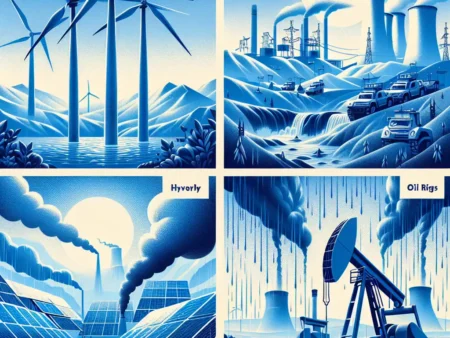Deskripsi meta: Menelusuri pengaruh urbanisasi terhadap pola cuaca di kota-kota besar melalui analisis dampak perubahan lingkungan perkotaan.
Menelusuri Pengaruh Urbanisasi terhadap Pola Cuaca di Kota-kota Besar
-
Table of Contents
Introduction

Urbanization is a global phenomenon that has significantly transformed the landscape of many countries, including Indonesia. As more people migrate from rural areas to cities in search of better opportunities, the impact of urbanization on various aspects of society becomes increasingly evident. One area that has been greatly affected by urbanization is the weather patterns in major cities. This article aims to explore the influence of urbanization on weather patterns in Indonesian cities, focusing on the changes in temperature, precipitation, and air quality.
The Urban Heat Island Effect
One of the most noticeable effects of urbanization on weather patterns is the creation of urban heat islands (UHI). An urban heat island refers to the phenomenon where cities experience higher temperatures compared to their surrounding rural areas. This is primarily caused by the replacement of natural surfaces with concrete and asphalt, which absorb and retain heat. Additionally, the concentration of buildings and human activities in cities generates heat through various sources such as vehicles, industries, and air conditioning systems.
Studies have shown that the UHI effect is particularly pronounced in densely populated cities with high levels of urbanization. Jakarta, the capital city of Indonesia, is a prime example of a city experiencing the UHI effect. The rapid expansion of Jakarta has led to the destruction of green spaces and the proliferation of concrete structures, resulting in significantly higher temperatures compared to nearby rural areas.
Temperature Changes
The UHI effect in Indonesian cities has led to a noticeable increase in temperatures, especially during the night. Urban areas tend to retain heat longer than rural areas, leading to warmer nights and reduced cooling opportunities. This increase in temperature can have various consequences, including increased energy consumption for cooling purposes, heat-related health issues, and changes in the behavior of flora and fauna.
A study conducted in Jakarta found that the city’s average temperature has increased by 1.8°C over the past century, with the most significant rise occurring in the last few decades. This rise in temperature can be attributed to the rapid urbanization and the associated UHI effect. Similar trends have been observed in other major Indonesian cities such as Surabaya, Bandung, and Medan.
Precipitation Patterns
Urbanization also has a significant impact on precipitation patterns in Indonesian cities. The replacement of natural surfaces with impervious materials reduces the ability of the land to absorb water, leading to increased surface runoff and decreased groundwater recharge. This can result in more frequent and intense urban flooding, as well as reduced water availability during dry periods.
Studies have shown that urban areas in Indonesia experience higher rainfall intensity compared to nearby rural areas. The increased rainfall intensity is primarily attributed to the presence of tall buildings and the heat generated by human activities, which enhance convective processes and cloud formation. This phenomenon is particularly evident in cities with high levels of urbanization, such as Jakarta and Surabaya.
Air Quality
Urbanization also has a significant impact on air quality in Indonesian cities. The concentration of vehicles, industries, and human activities in urban areas leads to increased emissions of pollutants such as particulate matter, nitrogen oxides, and volatile organic compounds. These pollutants can have detrimental effects on human health and the environment.
Studies have shown that the air quality in Indonesian cities, especially in highly urbanized areas, is often below the recommended standards set by the World Health Organization. Jakarta, for example, consistently ranks among the most polluted cities in the world. The high levels of air pollution in urban areas can lead to respiratory problems, cardiovascular diseases, and other health issues.
Conclusion
In conclusion, urbanization has a significant influence on weather patterns in Indonesian cities. The creation of urban heat islands leads to higher temperatures, increased rainfall intensity, and poor air quality. These changes have various implications for the environment, human health, and the overall livability of cities. It is crucial for policymakers and urban planners to consider the impact of urbanization on weather patterns and take appropriate measures to mitigate its negative effects. Encouraging the preservation of green spaces, promoting sustainable urban design, and implementing effective pollution control measures are some of the strategies that can help create more resilient and livable cities in Indonesia.







